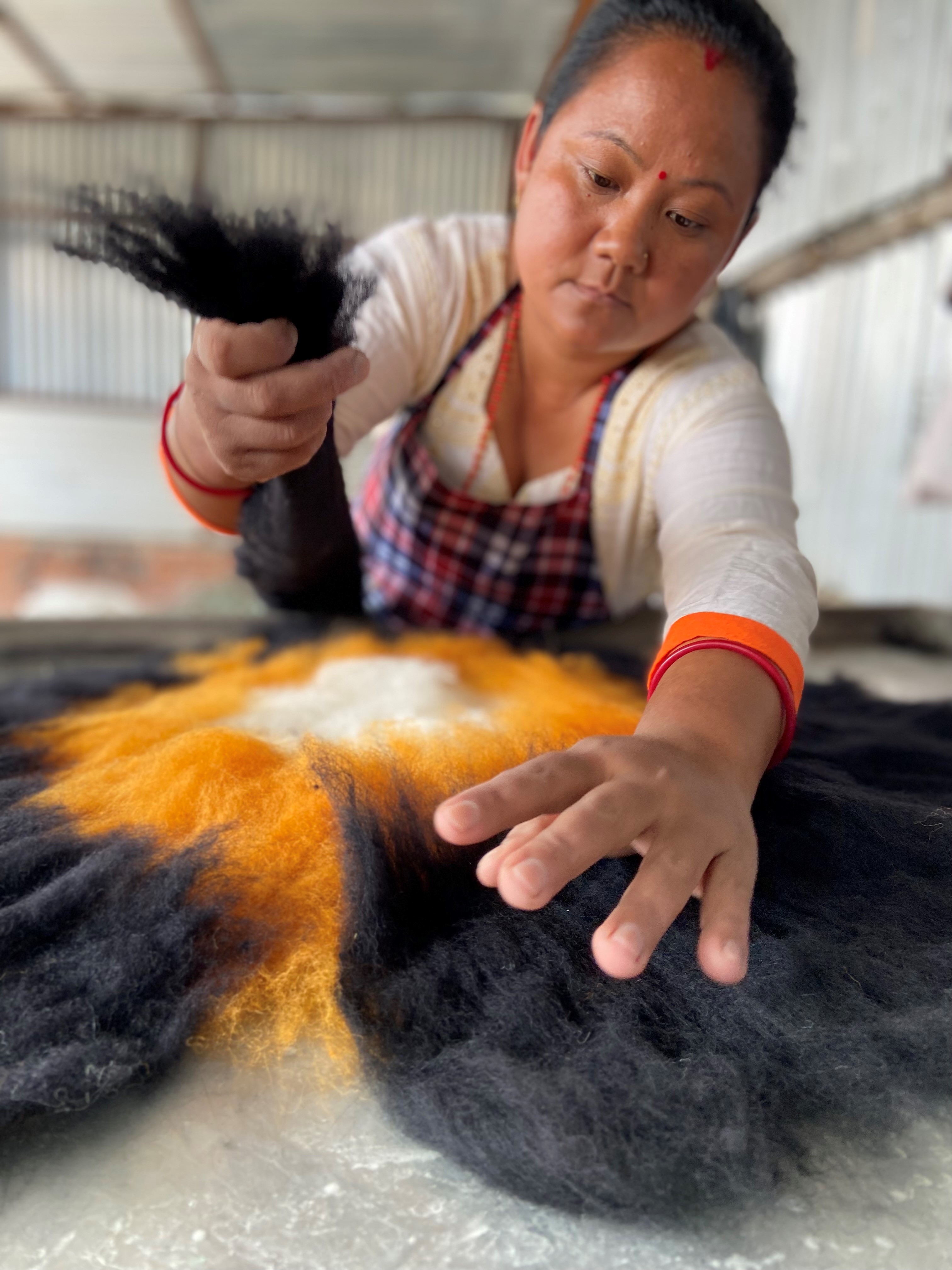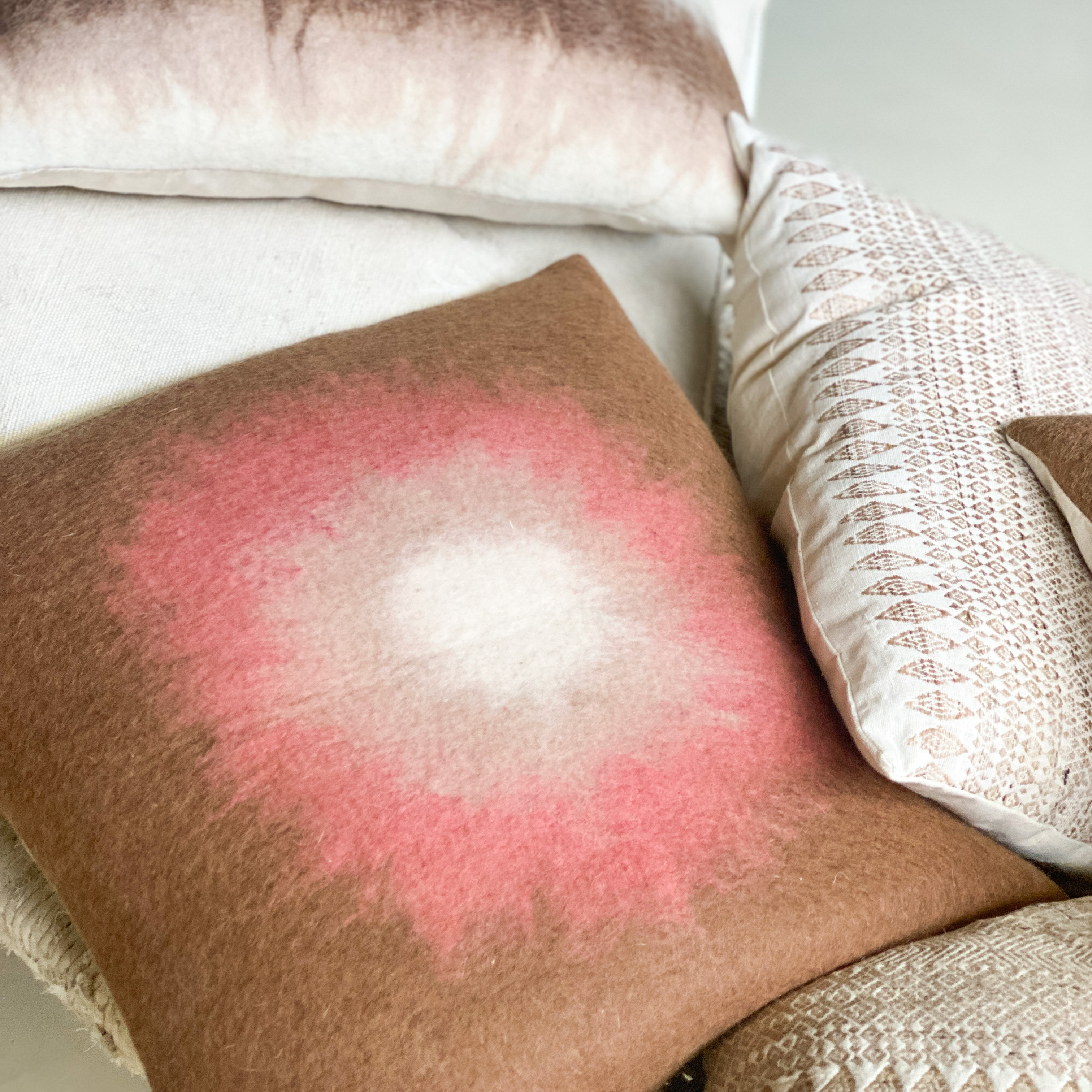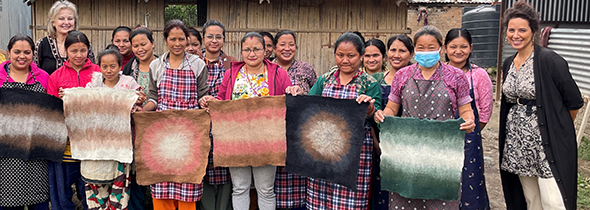How Long Has Felt Existed?
Felt is as old as the world! Well, as old as sheep at least. It is said to be the first textile made by humans, which sounds quite logical. It's a simple discovery: if you rub loose hairs from a sheep's fleece very often with water and soap, a piece of textile is formed. The strongest quality is achieved by laying thin layers of wool overlapping in one direction, with all hairs facing the same way. Then, another layer of wool is laid on top, with all hairs perpendicular to the previous layer. This process is repeated until the desired thickness is reached. Then, the layers are made wet with water and soap, and the long process of rubbing and rolling begins. With warm to hot water, which also causes wool to shrink, this effect can be achieved faster and more effectively. Finally, the felted piece is treated roughly to 'full' it. Here, the felted piece is thrown forcefully onto the work surface, causing the hairs to hook together more tightly, making the piece 'fuller.' A lot of hard work goes into making a felt cushion!

How was felt made and used in the past?
There are many known applications of felt from antiquity and even up to now, such as material for nomadic tents and carpets, felt cushions, clothing, and other everyday items like bags and baby carriers. Because felt can be extremely strong, it was also used in the early Middle Ages for protective clothing against arrows. For example, felt breastplates were made, saving many lives. It's fascinating to see how this process was carried out in ancient cultures. A piece of felt was wrapped around a cut tree trunk and tied with ropes behind a horse or camel. When the animal galloped, the felt hit the ground hard, achieving the fulling process without human effort. Another way to make felt with less effort, especially for large pieces, is to use your feet and legs instead of your hands and arms. Several people stand in a row and roll a round stick with a felt piece in progress forward, accompanied by singing to support the rhythm.
What Are the Benefits of Felt?
Felt is a purely natural material, consisting of 100% sheared wool. The sheep therefore remains alive and can be sheared again the following year. Sheep are crucial for grazing
our landscapes and help maintain several special plant species by simultaneously fertilizing them. That's another reason why a felt cushion is a beautiful product! Felt can feel hard and stiff or soft and supple, depending on the sheep breed. It is known that woolen items absorb sound waves well. That is why felt cushions and especially felt wall hangings are often used in rooms where acoustics are not good. Zenza's felt cushions and felt wall hangings are beautifully combined and can therefore have a pleasant effect on both the eyes and ears in the interior.

Felt Cushions in the Interior
Felt cushions are not only aesthetically appealing but also functional. They provide natural warmth and comfort, and their firm structure ensures that the felt cushions retain their shape. Thanks to the sound-dampening properties of felt, these felt cushions contribute to a soothing atmosphere in the room. Moreover, they are durable and easy to maintain, making them ideal for everyday use. Zenza's felt cushions are available in various colors and patterns, allowing them to seamlessly integrate into different interior styles, from modern to bohemian.
Felt Wall Hangings in the Interior
Felt wall hangings are an innovative way to add both aesthetics and functionality to a space. These wall decorations can help reduce noise, making them perfect for spaces where better acoustics are desired, such as offices, living rooms, and bedrooms. The natural texture and warm appearance of felt give the walls a unique and inviting look. Zenza’s felt wall hangings are available in various designs, from minimalist and sleek to richly decorated, making them a versatile addition to any interior.
Where are Zenza's felt cushions and felt wall tapestries made?
Zenza values fair and sustainable production highly. For the designs of our felt cushions and felt wall hangings, we found a women's project in Nepal. We visited the project ourselves and taught the women how to make our felt cushions and felt wall hangings, something they had not done before. In their rural community, there are few job opportunities, so this project beautifully fulfills this need.
To make a felt cushion, a layer of wool is laid that is at least 30% larger than the intended size of the final felt cushion. The second layer is laid in the opposite direction, to make the felt cushion strong in composition. Then, the pattern in wool is laid as the top layer. Until then, the whole thing does not look like a felt cushion at all; it is still very fluffy, and if the wind blew through it, everything would be gone. Then the work is made wet, and the process of rubbing with water and soap begins. Gradually, the wool shrinks and becomes firmer until you get the shape and thickness of the final felt cushion. Then the piece is rinsed and hung to dry in the sun. The seamstress makes a beautiful felt cushion ready for sale with sturdy canvas and a good zipper.
The women make the felt cushions and feltwall hangings with great pleasure and are just as proud of the result as we are!

What Wool Is Used for the Felt Cushions and Wall Hangings?
The wool that Zenza has chosen for the felt cushions and felt wall hangings comes from the Merino sheep. This sheep breed provides very soft, non-itchy, yet strong products. There are many sheep breeds in the world, each with a fleece with unique properties. The skill lies in choosing the right type of fleece for the desired product. Although felt is also made from other animal fleeces such as llama, camel, or even dog, no fleece is as suitable for felt cushions and felt wall hangings as that of the sheep.
A felt cushion should not itch the skin and yet be strong.
These qualities are found in Merino wool, which is why Zenza chooses Merino wool for felt cushions and felt wall hangings.
This ensures that a felt cushion lasts a long time, being strong and soft, just like the sheep itself!

